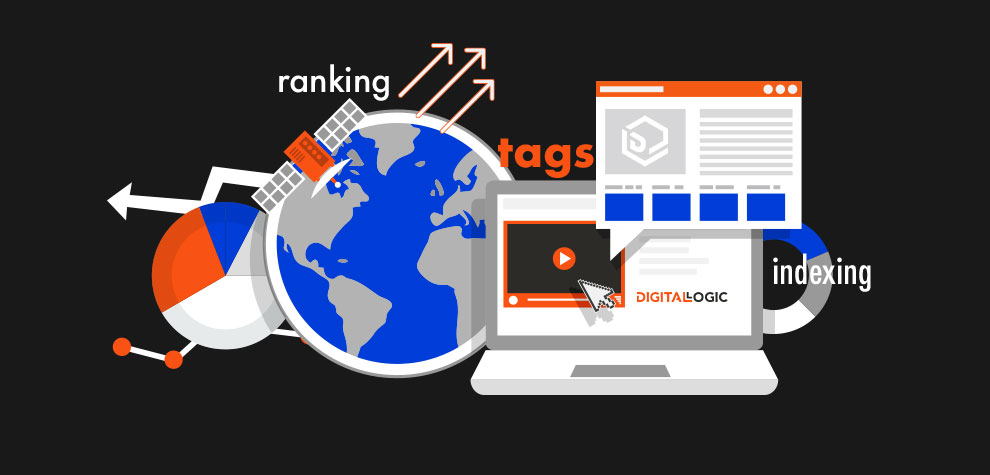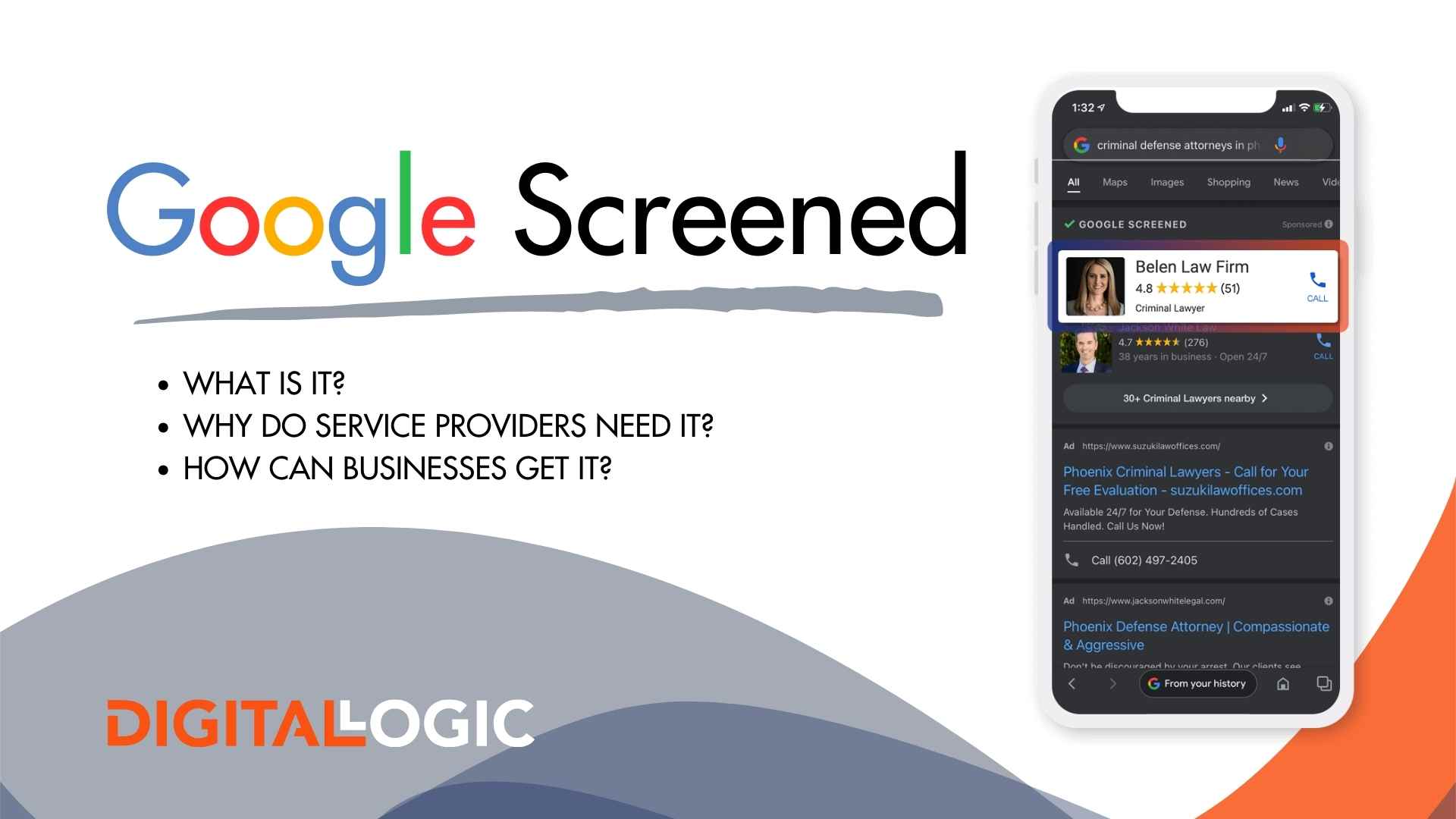At Digital Logic, we have a saying, “Where’s the best place to hide a dead body? On the second page of Google.”
If a page isn’t indexed by Google, it will not receive any organic traffic.
What is indexing?
Indexing, in oversimplified terms, is Google’s way of organizing every piece of content that’s on the web. Before you search for something and find it, Google has already organized the information about the webpages you’ll visit in its search index, similar to an online library, sort of. Google’s ranking process can be broken down into 3 main steps:
How do you check to see if your pages have already been indexed by Google or not? The first step is to understand what your indexation rate is.
What is my indexation rate? Here’s the formula:
Indexation Rate = # of Pages in Google’s Index / # of Pages on Your Website
You can review this information in Google Search Console, under Index Coverage Status Report.
 If you see several errors in the first box, it could be one of the following problems:
If you see several errors in the first box, it could be one of the following problems:


 Ahrefs has a “best by links” report that makes this very easy. This report gives me a list of my most authoritative pages, allowing you to link the page to pull the other page on up. Keep in mind that you do need to find a way to make these pages relevant to each other. Although it may be tempting, you don’t want to link unrelated pages together. Your audience will start to “bounce” off of the unrelated page, and Google will quickly realize that your site may have been given some authority that it doesn’t actually deserve.
Ahrefs has a “best by links” report that makes this very easy. This report gives me a list of my most authoritative pages, allowing you to link the page to pull the other page on up. Keep in mind that you do need to find a way to make these pages relevant to each other. Although it may be tempting, you don’t want to link unrelated pages together. Your audience will start to “bounce” off of the unrelated page, and Google will quickly realize that your site may have been given some authority that it doesn’t actually deserve.

 You should be sharing your new content, anyways, but this is an easy way to give Google an extra nudge to get it done.
You should be sharing your new content, anyways, but this is an easy way to give Google an extra nudge to get it done.
- Crawling
- Indexing
- Ranking
Are My Pages Indexed By Google?
Table of Contents
Toggle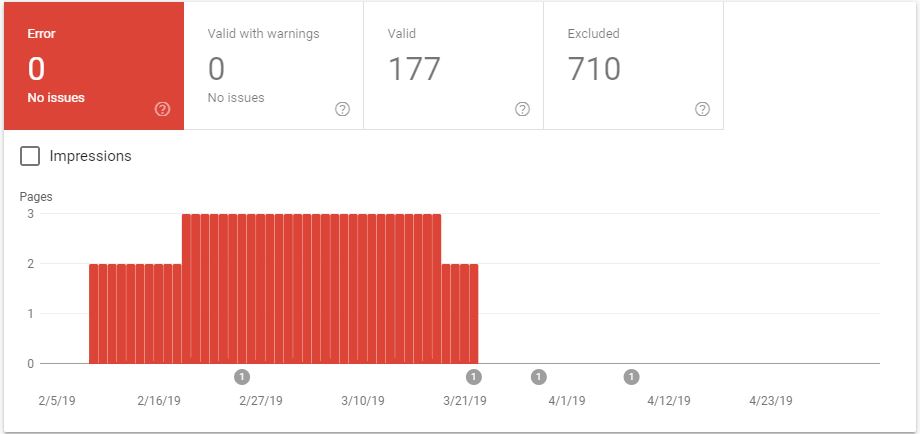 If you see several errors in the first box, it could be one of the following problems:
If you see several errors in the first box, it could be one of the following problems:
- There are non-indexable URLs on your sitemap
- You may have low quality or duplicate pages that Google is choosing not to show
- Your website may not yet have the “authority” for all of the pages
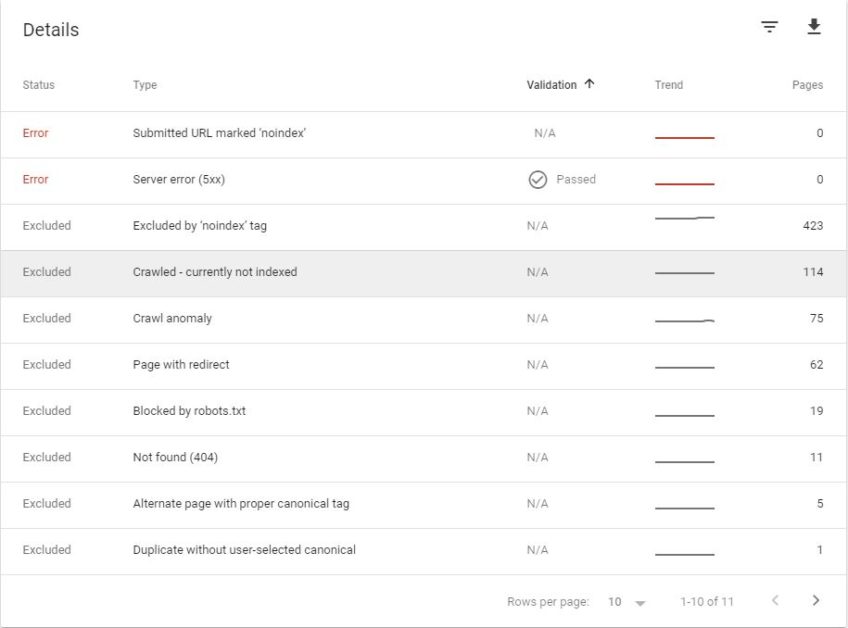

How to Get Your Website Pages Indexed by Google
It’s an overstated fact that everyone seems to continuously ignore: Google is ALL about UX (user experience). Kind of reminds me of the Spice Girls lyric, “If you wanna be my lover, you gotta get with my friends.” The fact of the matter is simple; if you want to be indexed by Google, you’ve gotta make the experience good for its users, as well. If you’ve pulled out all of your SEO stops, tried all the tricks of the trade and still aren’t getting past a certain point on Google, chances are, you probably have a poor user experience. Google has a strict set of guidelines with respect to trust, quality, and authority, and if your site doesn’t follow these rules, nothing will help you. If you aren’t sure what these are, check out Google’s Steps to a Google-friendly site. After you’ve made sure your website it following all of the Google rules, you can move forward to step 1.Step 1: Get Indexed by Google Using URL Inspection Tool
What is the URL Inspection Tool? You may hear some refer to this step as “Fetch as Google”, this was the older program, with the same concept. The URL Inspection Tool shows the information about both the indexed and live versions of the URL. A few common tasks for the URL Inspection Tool include:- The ability to view your resources list, page codes, and more information on your links via the verdict card
- View a rendered version- or put simply, view the page the way a Googlebot sees the page
- Inspect a live URL- see if your page is able to be indexed by Google
- Inspect an indexed URL- see the information about the indexed version and why or why not Google indexed it
- Request indexing for a URL- request that a specific URL be crawled by Google
- First, you’ll log into Google’s Search Console
- Then you’ll look on the lefthand side and click URL inspection, with the magnifying glass beside it
- After that, a search bar will pop up that looks like this:
- You’ll fill in the URL that you’d like Google to index and press “enter”
- After Google has found the URL, click “Submit to Index”
Step 2: Get Indexed by Google Using Internal Links
Google search engines crawl from page to page through HTML links. You can use your “authority” pages on your website to push some of the authority to the newer pages that you want to be indexed.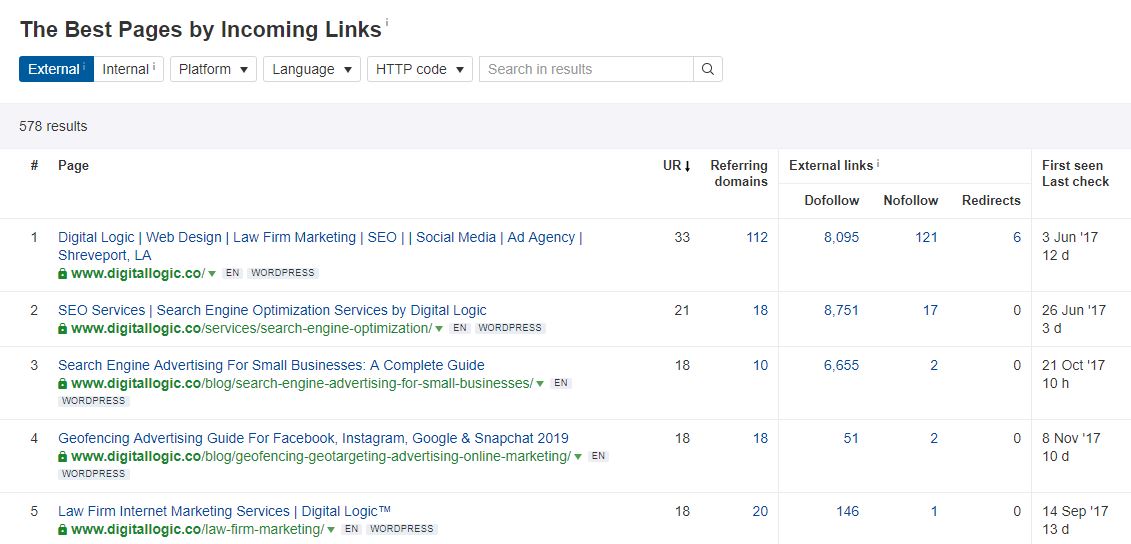 Ahrefs has a “best by links” report that makes this very easy. This report gives me a list of my most authoritative pages, allowing you to link the page to pull the other page on up. Keep in mind that you do need to find a way to make these pages relevant to each other. Although it may be tempting, you don’t want to link unrelated pages together. Your audience will start to “bounce” off of the unrelated page, and Google will quickly realize that your site may have been given some authority that it doesn’t actually deserve.
Ahrefs has a “best by links” report that makes this very easy. This report gives me a list of my most authoritative pages, allowing you to link the page to pull the other page on up. Keep in mind that you do need to find a way to make these pages relevant to each other. Although it may be tempting, you don’t want to link unrelated pages together. Your audience will start to “bounce” off of the unrelated page, and Google will quickly realize that your site may have been given some authority that it doesn’t actually deserve.
Step 3: Blocking Your Low-Quality Pages From Google’s Index
There’s a saying “Content is King”. However, unrelated or low-quality content can actually hurt your website. If you have too many pages that bring no value to your overall website’s user experience, Google will actually decrease the number of times it crawls your website. Just like with anything else that grows in life, in order to keep growing, you’ll need to cut off a few areas. If you see some of the older pages that you may have once thought were great, are now garbage, trash them. Pages that serve no value should be in one of the following categories:- Set to No Index- This is when a page still has value to your audience, but not necessarily to your search engines. A few examples of this include thank you pages, additional landing pages set for conversion tracking purposes.
- Crawl Blocked through Robots.txt- When a bulk set of pages has value, but not to Google’s search bots, you’ll use this option. This may be your archives or older press releases that someone may still want for reference.
- 301 Redirects- When the page is no longer useful but has links and existing traffic, such as your older blogs that were once popular.
- Deleted 404’s- When a page adds no value to your audience, nor does it have value for the search engines.
Step 4: Getting Indexed by Adding the Page to Sitemap
Your sitemap is virtually there for one purpose and one purpose only, and that is to help Google correctly index all of your pages. It is set up in a way that the flow is built for the bots. Having the page in your sitemap isn’t a set-in-stone guarantee, though. However, failing to add the newer pages will decrease your chances of getting that page indexed. If you’re running your website on WordPress, this process is super simple to set up through a plugin like Yoast. Once your sitemap is built, you can review it on Google Console’s Sitemaps Report. Here you’ll want to double check that everything that you want to be indexed is on the list and that everything that you prefer not to have indexed, isn’t. It should look something like this: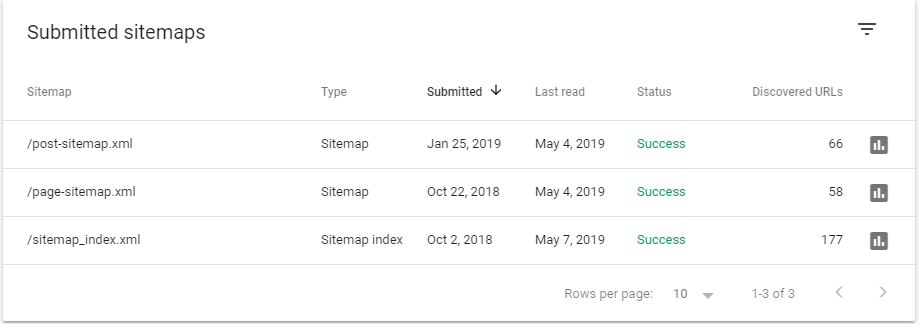
Step 5: Share it on Social
There’s kind of a running joke surrounding social media along the lines of, “if you didn’t post it, did it really happen?” That’s more or less the thought process here. If you don’t post your new page to a social media outlet, especially Twitter, that gets crawled regularly, did you really build the page?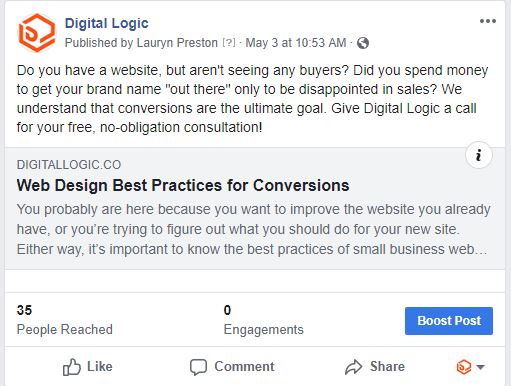 You should be sharing your new content, anyways, but this is an easy way to give Google an extra nudge to get it done.
You should be sharing your new content, anyways, but this is an easy way to give Google an extra nudge to get it done.
Step 6: High Traffic Sharing to Get Indexed
Sites such as Reddit or Quora are super popular sites that allow you to nonchalantly drop your links. Not only does it help you get indexed, but it will also help drive a ton of traffic if done correctly.Step 7: Securing Your External Links
Like we mentioned earlier, Google crawls pages through HTML links. If you are able to get other websites to link to your page, not only gives you a huge help in the ranking factor but is also a good way to help with indexation. Think of it like this: other sites see you as an authority, so Google will follow suit. The easiest way to get free links:- publish content for another website
- find other relevant bloggers that are somewhat related to but not directly in your niche and reach out with a “swap” style request
